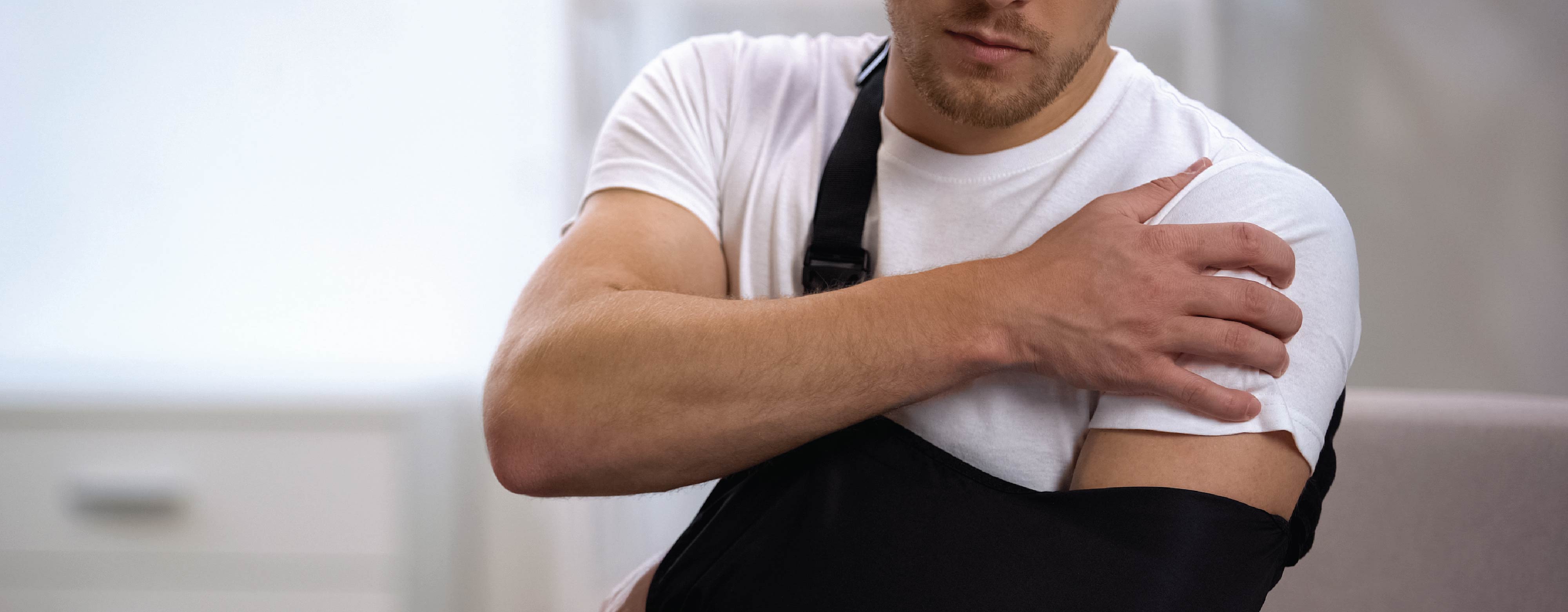Whether on the field, court or track, the world of sports carries both the thrill of competition and the risk of injury.
Shoulder injuries, in particular, can be challenging to overcome and predict when injury will occur even more so. While we know injuries can and will happen, knowing which shoulder injuries are common may help you avoid becoming another statistic.
Currently, the statistics for shoulder injuries rank high across different NCAA sports, and most occur as overhead injuries (Cole et al., 2013; Zaremski et al., 2017):
• 69% in baseball
• 60% in swimming
• 50% in tennis
• 36% in water polo
• 25% in American football
• 22% in volleyball

Biomechanical analysis of overhead activities, like throwing, clarifies that the shoulder musculature has two main functions. This first function generates force, and the second stabilizes the shoulder joint (glenohumeral joint).
In a throwing sport like baseball where the pitcher throws every pitch at maximum effort, the glenohumeral joint absorbs considerable stress because of the force and speed involved. Such movements stretch the front part of the shoulder and make the back part tighter. As a result, the shoulder can rotate outward more, but it may have trouble turning inward, making it less stable.
According to a recent article in Sports Illustrated, pitching fastballs at 100 mph is more common today than stealing bases. Tom Verducci, a sports journalist with 41 baseball seasons, reported that the number of pitchers who can throw at these impressive speeds has tripled since 2018.
Yet something else is also changing. Fewer pitches during training and more rest days in between. Rightfully so, as repetitive movements remain one of the most common causes of injuries, especially shoulder injuries.
What are the common causes of shoulder injuries?
According to a recent assessment of common injuries in sports (Romero-Morales et al., 2023), the most frequent pathologies and injury mechanisms for the shoulder stem from repetitive movements, rotation forces, fatigue and poor mechanics. In some cases, injuries result from an impact between players.
An experienced chiropractor, physiotherapist, trainer or orthopedist is best to determine the source of a shoulder injury and any associated pain. Scapular problems, nerve and blood vessel pressure, and underlying structural issues in the glenohumeral joint, such as the rotator cuff, labrum, and capsule, should all be considered. Each possibility must be tested and ruled out before arriving at a diagnosis.
However, recognizing the cause of shoulder pain early on is crucial, as conservative treatments can help prevent the rapid deterioration of muscle, tendon, capsule or labral conditions.
Treatment Approaches
Effective treatment of sore or injured shoulders can take on many forms- including manual therapy, rehab exercise, rest, injection and even surgery. One commonality all of these treatment options share is increasing the proprioceptive awareness of the shoulder allows them to all be more successful.
Proprioception is our body’s ability to sense self-movement, force and body position.

We know that both acute and chronic shoulder injuries cause a decrease in shoulder joint stability and proprioceptive function of the shoulder. A 2015 study by Burfeind et al. looked at the effect that Spidertech’s Shoulder Pro-cut has on shoulder proprioceptive awareness. The study concluded that Spidertech’s Shoulder Pro-cut significantly improved both shoulder flexion and external rotation proprioception- measured by joint-reposition-sense, a key indicator of proprioceptive function. The method in which the Shoulder Pro-cut increases proprioceptive awareness can help in all phases of the rehab process.
- Improves the flow of inflammation, creatine kinase and lactic acid- preventing pooling and fluid congestion
- Decreases muscular tension and spasm around the shoulder
- Improves the muscular awareness during rehab exercises making movements more previse
- Allows the athlete to begin pitching again with confidence and precision in their throwing mechanics
The Spidertech Shoulder Pro-cut is recommended by doctors and therapist working with high level throwing athletes all around the world as part of their rehabilitation and injury prevention training programs. Speak to your doctor or therapist to find out if it’s right for you too.
References
-
Burfeind, S. M., & Chimera, N. (2015). Randomized Control Trial Investigating the Effects of Kinesiology Tape on Shoulder Proprioception. Journal of Sport Rehabilitation, 24(4), 405-412. Retrieved Jan 5, 2024, from Cole, A.K., McGrath, M.L., Harrington, S.E., Padua, D.A., Rucinski, T.J., & Prentice, W.E. (2013). Scapular bracing and alteration of posture and muscle activity in overhead athletes with poor posture. Journal of athletic training, 48 1, 12-24. DOI:10.4085/1062-6050-48.1.13
-
Romero-Morales, C., López-López, D., Almazán-Polo, J., Mogedano-Cruz, S., Sosa-Reina, M. D., García-Pérez-de-Sevilla, G., Martín-Pérez, S., & González-de-la-Flor, Á. (2023). Prevalence, diagnosis and management of musculoskeletal disorders in elite athletes: A mini-review. Disease-A-Month, 101629. https://doi.org/10.1016/j.disamonth.2023.101629
-
Medina, Giovanna MD, PhD; Bartolozzi, Arthur R. III MD; Spencer, Jacob A. DO; Morgan, Craig MD. The Thrower’s Shoulder. JBJS Reviews 10(3):e21.00194, March 2022. | DOI: 10.2106/JBJS.RVW.21.00194
-
Seroyer, S. T., Nho, S. J., Bach, B. R., Bush‐Joseph, C. A., Nicholson, G. P., & Romeo, A. A. (2009). Shoulder pain in the overhead throwing athlete. Sports Health: A Multidisciplinary Approach, 1(2), 108-120. https://doi.org/10.1177/1941738108331199
-
Verducci, Tom. There’s a science behind more high-velocity pitches but there’s also a cost, Sports Illustrated, https://www.si.com/mlb/2023/05/01/high-velocity-pitching-what-it-means-for-mlb-pitchers. Date of last access: December 11, 2023.
-
Zaremski JL, Wasser JG, Vincent HK. Mechanisms and Treatments for Shoulder Injuries in Overhead Throwing Athletes. Curr Sports Med Rep. 2017 May/Jun;16(3):179-188. DOI: 10.1249/JSR.0000000000000361






Partager:
Power Up Your Day: The Ultimate Athlete's Breakfast
Good-bye knee pain, hello kinesiology tape